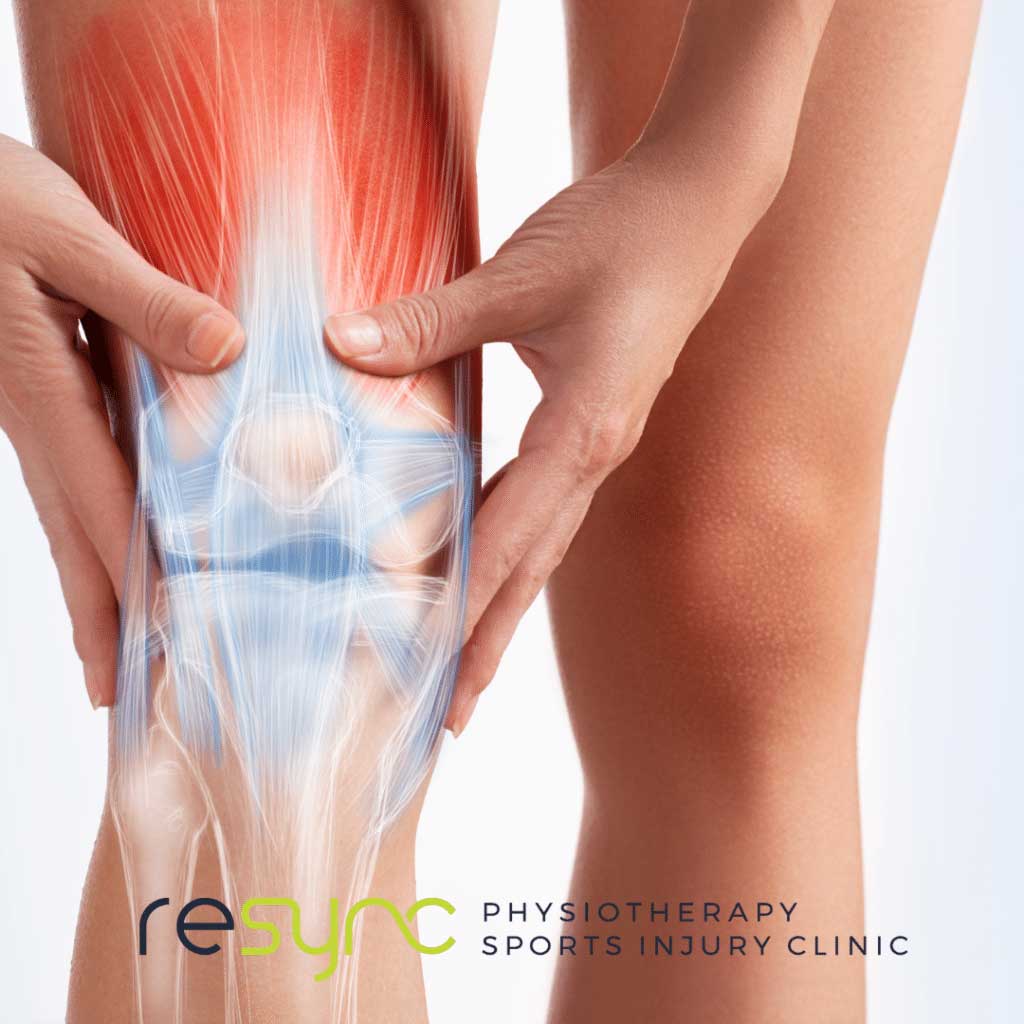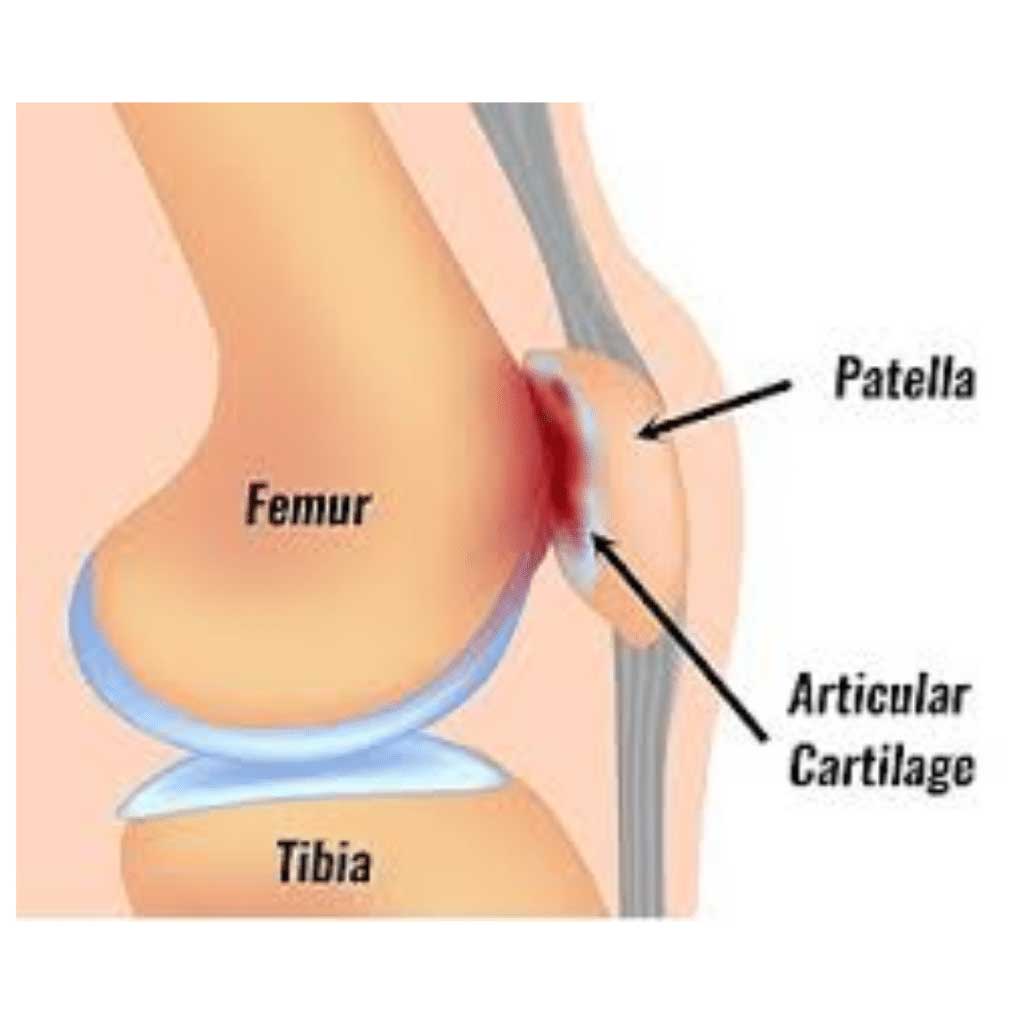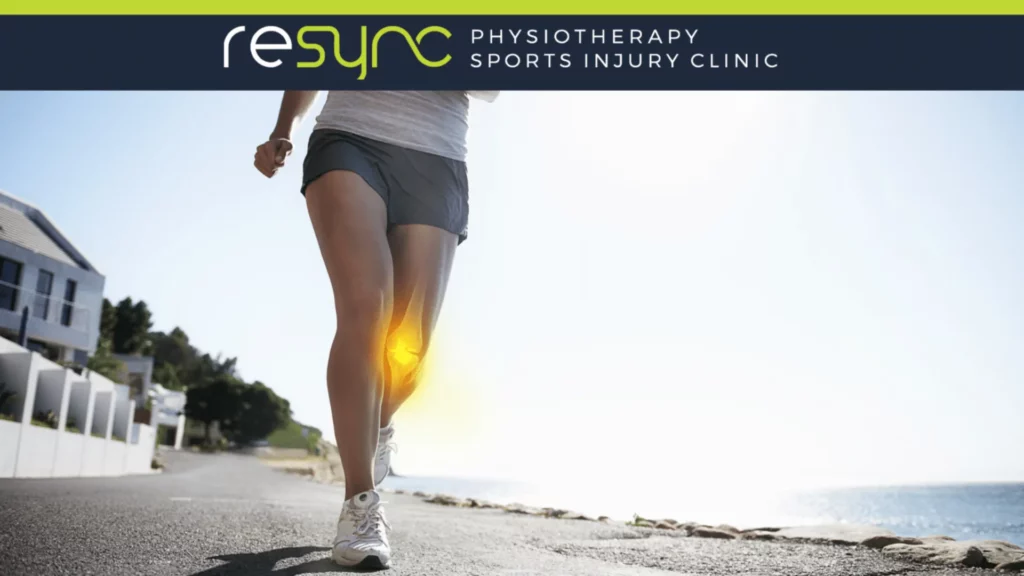Below is some general information surrounding Runners knee or Patellofemoral Pain Syndrome.
This blog covers the following topics
- What is Runner’s knee
- How do I know if I have Runner’s knee
- What Structures are affected by Runners Knee
- What Biomechanical Issues cause Runners Knee
- What exercises are good for Runners Knee
- Can I continue to run with Runners Knee
- Can Strengthening help protect against Runners Knee
- Treatment for Runner’s Knee
Runner’s knee, also known as patellofemoral pain syndrome, is a common overuse injury that affects runners and other athletes who engage in activities that require repetitive bending of the knee. It is characterized by a dull, aching pain in the front of the knee, especially around or behind the kneecap (patella). The pain may worsen when running, jumping, squatting, or descending stairs.
Runner’s knee is usually caused by the irritation and inflammation of the soft tissues surrounding the kneecap, such as the patellar tendon, the quadriceps muscles, and the synovial membrane. This can be due to a variety of factors, including overuse, poor biomechanics, weak or tight muscles, foot problems, or a sudden increase in training intensity or volume.
Treatment for runner’s knee usually involves rest, ice, compression, and elevation (RICE therapy), as well as nonsteroidal anti-inflammatory drugs (NSAIDs) and physical therapy to relieve pain and inflammation, strengthen the muscles around the knee, and improve flexibility and balance. In some cases, surgery may be necessary to correct underlying structural problems or remove damaged tissue.

How do i know if I have Runner’s Knee
If you are experiencing pain in the front of your knee, especially around or behind the kneecap, and you are a runner or engage in activities that require repetitive bending of the knee, you may have runner’s knee. Here are some of the common symptoms associated with this condition:
- Pain around or behind the kneecap
- Aching or throbbing pain in the knee, especially after running or other activities that stress the knee joint
- Pain when walking up or down stairs, kneeling, squatting, or sitting for long periods of time
- Swelling or tenderness around the kneecap
- A popping or cracking sound when bending or straightening the knee
- Stiffness or limited range of motion in the knee
If you are experiencing any of these symptoms, it is important to see a doctor or a physical therapist for an accurate diagnosis and appropriate treatment. Other conditions, such as a torn meniscus or ligament, can also cause knee pain, so it is important to rule out other potential causes before starting any treatment.
What Structures are affected by Runners Knee
Several structures around the knee joint can be affected by runner’s knee, including:
- Patella: The patella is a small, triangular bone that sits in front of the knee joint. It is held in place by the patellar tendon and several other ligaments. In runner’s knee, the patella may become misaligned or irritated, leading to pain and discomfort.
- Quadriceps muscles: The quadriceps muscles are a group of muscles located in the front of the thigh that help to straighten the knee. In runner’s knee, weakness or imbalances in the quadriceps muscles can contribute to the development of the condition.
- Iliotibial band (IT band): The IT band is a thick band of tissue that runs from the hip to the knee along the outside of the thigh. In runner’s knee, the IT band can become tight or inflamed, leading to pain and discomfort around the knee joint.
- Cartilage and ligaments: The knee joint is also supported by various cartilage and ligaments, which can become damaged or inflamed in cases of runner’s knee.
The specific structures affected by runner’s knee can vary from person to person, and may depend on the underlying cause and severity of the condition. A thorough evaluation by a healthcare professional is often needed to determine the cause and appropriate treatment for runner’s knee.

What Biomechanical Issues cause Runners Knee
There are several biomechanical issues that can contribute to the development of runner’s knee, including:
- Patellar maltracking: The patella (kneecap) is a small, triangular bone that sits in front of the knee joint. In some cases, the patella may not track properly over the femur (thigh bone) during movement, leading to irritation and inflammation of the patellofemoral joint. This can be caused by a variety of factors, including muscle imbalances, weak or tight ligaments, and structural abnormalities.
- Weakness or imbalances in leg muscles: Weakness or imbalances in the leg muscles can contribute to the development of runner’s knee. Specifically, weakness in the quadriceps muscles (located in the front of the thigh) and gluteal muscles (located in the buttocks) can lead to increased stress and pressure on the patellofemoral joint during activity.
- Overpronation or supination: Overpronation (excessive inward rolling of the foot) or supination (excessive outward rolling of the foot) can alter the alignment of the leg and knee, leading to increased stress and pressure on the patellofemoral joint. This can be caused by a variety of factors, including flat feet, high arches, previous achilles tendon injury and muscle imbalances.
- Tightness or inflammation of soft tissues: Tightness or inflammation of the iliotibial band (IT band), hamstring muscles, and other soft tissues around the knee joint can contribute to the development of runner’s knee. This can be caused by a variety of factors, including overuse, poor running form, and improper footwear.
- Previous knee injuries: Previous knee injuries, such as ligament tears or fractures, can alter the biomechanics of the knee joint and increase the risk of developing runner’s knee.
What exercises are good for runners knee
If you have runner’s knee, it is important to consult with a doctor or physical therapist to develop a personalized treatment plan that takes into account your individual needs and level of fitness. That said, here are some exercises that may be helpful for strengthening the muscles around the knee and improving flexibility and balance:
- Quadriceps strengthening exercises: Exercises that target the quadriceps muscles, such as leg extensions, squats, and lunges, can help improve knee stability and reduce pain. It is important to perform these exercises with proper form and gradually increase the resistance or weight as tolerated.
- Hamstring strengthening exercises: Strengthening the hamstring muscles can help balance the forces around the knee joint and improve knee alignment. Examples of hamstring exercises include deadlifts, hamstring curls, and glute bridges.
- Calf stretching exercises: Tight calf muscles can contribute to runner’s knee by placing extra stress on the knee joint. Stretching exercises, such as standing calf stretches or foam rolling, can help improve flexibility and reduce tension in the calf muscles.
- IT band stretching exercises: The iliotibial (IT) band is a thick band of tissue that runs along the outside of the thigh and can become tight and inflamed in runners. Stretching exercises, such as IT band stretches or foam rolling, can help alleviate tension in the IT band and reduce knee pain.
- Balance and stability exercises: Exercises that improve balance and stability, such as single-leg squats or standing on one leg, can help improve the function of the muscles around the knee joint and reduce the risk of future injuries.
Remember to always start with gentle exercises and progress gradually as tolerated. It is important to listen to your body and avoid activities or exercises that cause pain or discomfort.
Can I continue running with runner’s knee
If you have runner’s knee, it is important to give your knee time to rest and recover before resuming running or other high-impact activities. Continuing to run with runner’s knee can exacerbate the condition and lead to further damage or injury.
The length of time needed for rest and recovery can vary depending on the severity of your symptoms and individual factors such as age, fitness level, and overall health. In general, it is recommended to rest the affected knee for several days to a week, and to gradually resume running or other activities only after the pain and inflammation have subsided.
Once you do return to running, it is important to gradually increase your mileage and intensity, and to incorporate exercises that can help prevent future injuries. Your doctor or physical therapist can help you develop a safe and effective plan for returning to running and managing your runner’s knee symptoms.
Can strengthening help protect against runners knee
Yes, strengthening exercises can help protect against runner’s knee by improving the function of the muscles and joints around the knee joint. Stronger muscles can help absorb shock and reduce stress on the knee joint, while also improving alignment and stability.
In particular, strengthening the quadriceps, hamstrings, glutes, and core muscles can help reduce the risk of runner’s knee by improving the overall strength and stability of the lower body. These muscles work together to support the knee joint and absorb forces during running and other high-impact activities.
Strengthening exercises should be performed regularly and progressively, with a focus on proper form and technique. Your physical therapist or trainer can help you develop a personalized strength-training plan that is tailored to your individual needs and fitness level.
It is important to note, however, that strengthening alone may not be enough to prevent runner’s knee. Other factors, such as proper footwear, good running form, and adequate rest and recovery, are also important for reducing the risk of injury.
Runners knee treatment
The treatment for runner’s knee depends on the severity and cause of the condition. Here are some of the common treatment options for runner’s knee:
- Rest: Resting the affected knee is important to allow time for the inflammation and pain to subside. It may be necessary to avoid running and other high-impact activities for a period of time, and to use crutches or other assistive devices to reduce weight-bearing on the knee.
- Ice: Applying ice to the affected knee can help reduce pain and inflammation. Ice can be applied for 15-20 minutes at a time, several times a day.
- Compression: Wearing a compression bandage or sleeve around the knee can help reduce swelling and provide support.
- Elevation: Elevating the affected knee above heart level can help reduce swelling and improve circulation.
- Physical therapy: Working with a physical therapist can help improve flexibility, strength, and balance, and reduce the risk of future injuries. Physical therapy may include exercises, stretches, manual therapy, and other modalities.
- Medications: Over-the-counter pain relievers such as ibuprofen or naproxen can help reduce pain and inflammation. In some cases, prescription medications may be necessary to manage pain and inflammation.
- Surgery: In rare cases, surgery may be necessary to repair or remove damaged tissue around the knee joint.
It is important to consult with a doctor or physical therapist to determine the best treatment plan for your individual needs and level of fitness. With proper treatment and management, most cases of runner’s knee can be resolved within several weeks to a few months.
How many physiotherapy treatments does it take to resolve runners knee
The number of physiotherapy treatments needed to resolve runner’s knee can vary depending on the severity and cause of the condition, as well as individual factors such as age, fitness level, and overall health. In general, a course of physiotherapy treatment for runner’s knee may last anywhere from a few weeks to several months.
During physiotherapy, a physical therapist will work with you to develop a personalized treatment plan that may include exercises, stretches, manual therapy, and other modalities. The number of treatment sessions needed will depend on your individual progress and response to treatment.
In general, a typical course of physiotherapy for runner’s knee may involve 1-2 sessions per week for several weeks, with a gradual reduction in frequency as symptoms improve. Your physical therapist will monitor your progress and adjust the treatment plan as needed.
It is important to follow the physiotherapy plan as prescribed, and to continue with home exercises and stretches as recommended by your therapist. With proper treatment and management, most cases of runner’s knee can be resolved within several weeks to a few months.
If you have any questions please book in for a free discovery call via this link
Check out some more information on running injuries below
Video

